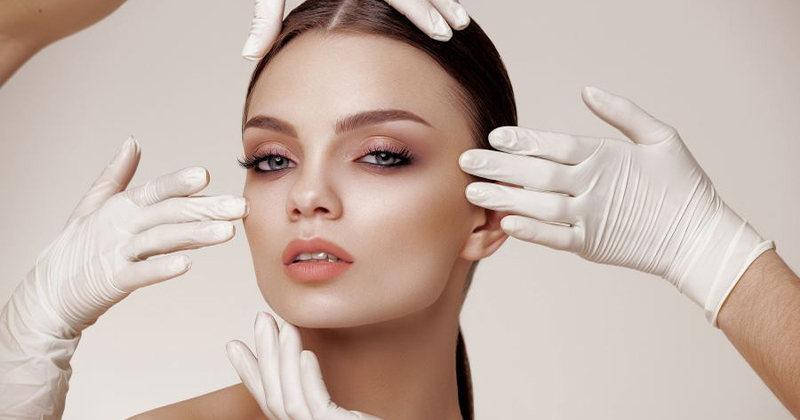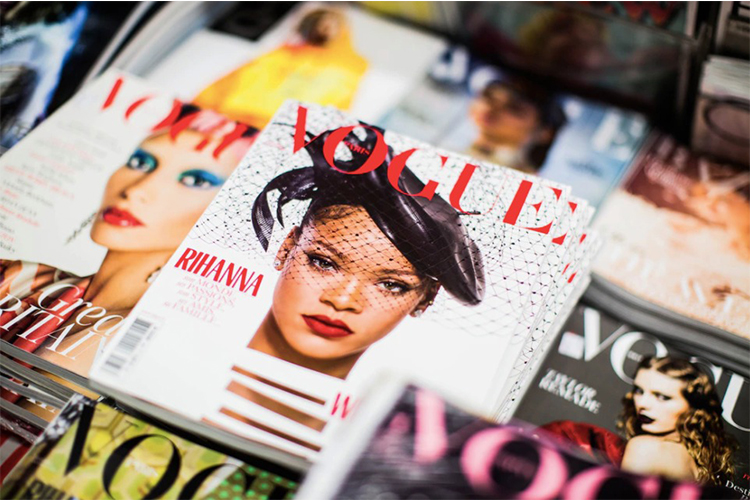
The Influence of Fashion on the Concept of Beauty Ideals
Beauty has always been a subject of fascination and admiration in society, and throughout history, the definition of beauty has constantly evolved. One of the key drivers of this evolution is the fashion industry. Fashion has a tremendous influence on shaping and redefining beauty ideals, often setting the standards for what is considered attractive and desirable.
Fashion is not solely about clothing;
it encompasses a wide range of elements, including hairstyles, makeup, body types, and even the way individuals carry themselves. Through trends, styles, and media representation, the fashion industry creates a narrative that impacts the way people perceive and aspire to beauty.

Trendsetting by Fashion Designers:
Fashion designers play a crucial role in shaping beauty ideals. They create collections that reflect their creative vision and set the trends for each season. These trends encompass not only clothing but also hairstyles, accessories, and makeup styles. Designers dictate what is considered fashionable, and their choices heavily influence the beauty ideals of the time.
Media Representation:
Fashion magazines, websites, and social media platforms are powerful mediums for disseminating beauty ideals. They feature models and celebrities who embody the current fashion trends and are often seen as the epitome of beauty. These images are widely circulated and consumed by the public, leading to the internalization of these beauty standards.
Influence of Advertising:
Advertising campaigns heavily rely on the concept of beauty ideals to promote products. Advertisements often feature models or celebrities who align with the desired aesthetic, making consumers associate the product with the idealized beauty portrayed. This constant exposure to such imagery reinforces specific beauty standards and influences individuals’ perceptions of themselves and others.
Impact of Social Media:
The rise of social media platforms has further intensified the influence of fashion on beauty ideals. Influencers and celebrities on platforms like Instagram and TikTok have significant followings and can shape trends and beauty standards through their content. They showcase their own styles, body types, and beauty routines, garnering admiration and emulation from their followers.
Diversity and Inclusivity:
In recent years, there has been a growing demand for diversity and inclusivity within the fashion industry. Consumers are increasingly pushing for representation of different body types, ethnicities, and ages. This shift has started to redefine beauty ideals, challenging the narrow standards that were previously perpetuated. Fashion brands are now more inclined to showcase a wider range of models and celebrate uniqueness and individuality.

Cultural Influence:
Fashion is deeply intertwined with culture and reflects the values and ideals of a society. Different cultures have their own unique beauty standards, which are often influenced by fashion trends. As fashion becomes more globalized, cultural exchange occurs, leading to the fusion of beauty ideals. This cross-cultural exchange can redefine and expand the concept of beauty, incorporating diverse elements from various traditions.
Evolution of Fashion Icons:
Fashion icons, such as models, celebrities, and style influencers, have a significant impact on beauty ideals. Their personal style and choices inspire and influence a wide audience. When these icons embrace a particular look or trend, it often becomes popular and shapes the beauty ideals of the time. Their influence extends beyond the fashion industry and permeates popular culture, making them powerful agents of change.
Psychological Impact:
Fashion’s influence on beauty ideals can have psychological effects on individuals. Constant exposure to unattainable beauty standards can lead to low self-esteem, body dissatisfaction, and even mental health issues. The pressure to conform to these standards can be overwhelming, leading to harmful behaviors such as extreme dieting or body modifications. It is crucial to promote body positivity and self-acceptance, encouraging individuals to embrace their unique beauty.
Counter-Cultural Movements:
Fashion also plays a role in challenging traditional beauty ideals and societal norms. Counter-cultural movements, such as the body positivity movement or the rise of gender-neutral fashion, challenge the conventional notions of beauty. They celebrate diversity, inclusivity, and individuality, promoting a more inclusive and accepting definition of beauty that goes beyond physical appearance.
Fashion as Empowerment:
On the other hand, fashion can also be a means of empowerment. It allows individuals to express their personal style, creativity, and individuality. Fashion can be a tool for self-expression and self-confidence, enabling people to embrace their unique beauty and challenge societal beauty ideals.
Historical Context:
The influence of fashion on beauty ideals is also seen in the historical context of different eras. Fashion has always been a reflection of societal values and norms. For example, during times of economic prosperity, fashion trends tend to lean towards opulence and glamour, while during periods of austerity, simplicity and minimalism may be favored. These shifts in fashion reflect and shape the prevailing beauty ideals of each era.
Fashion's Role in Gender Identity:
Fashion plays a significant role in shaping beauty ideals associated with gender identity. Traditional notions of femininity and masculinity are often reinforced through fashion trends, such as the emphasis on hourglass figures for women or muscular physiques for men. However, there has been a growing movement to challenge and break down these gender stereotypes, with fashion becoming more inclusive and blurring the lines between traditional gender norms.
Socioeconomic Influence:
Fashion can also be influenced by socioeconomic factors, and in turn, it shapes beauty ideals. High-end fashion brands and luxury items are often associated with prestige and wealth. Aspirational beauty ideals can be influenced by the desire to emulate the affluent and glamorous lifestyles portrayed in the fashion industry. However, there is a growing recognition of the need for fashion to be more accessible and representative of diverse socioeconomic backgrounds.

Intersectionality and Diversity:
The fashion industry has faced criticism for its lack of diversity and representation, particularly regarding race, size, and age. However, there has been a gradual shift towards inclusivity and embracing diversity in recent years. Fashion brands are increasingly featuring models of various ethnicities, body sizes, and ages, challenging the traditional beauty ideals that were predominantly centered around Eurocentric standards.
The Power of Consumer Demand:
Ultimately, the influence of fashion on beauty ideals is shaped by consumer demand. As consumers become more conscious and vocal about their preferences, fashion brands are compelled to adapt and cater to a broader range of beauty ideals. The rise of ethical fashion, sustainable practices, and body-positive movements is a testament to the power of consumer demand in reshaping beauty standards.
Reinforcement of Stereotypes:
Fashion can perpetuate and reinforce stereotypes related to beauty ideals. For instance, there has been a long-standing tendency to favor thinness in women and muscularity in men, which can contribute to body image issues and unrealistic expectations. These stereotypes can have a negative impact on individuals’ self-esteem and well-being, highlighting the need for a more inclusive and diverse representation of beauty in the fashion industry.
Cultural Appropriation:
Fashion’s influence on beauty ideals can sometimes lead to cultural appropriation. Cultural elements, such as traditional clothing, hairstyles, or accessories, may be taken out of their original context and presented as fashion trends without proper acknowledgment or respect for the cultures they originate from. This can perpetuate harmful stereotypes and disregard the cultural significance behind these elements, causing harm and offense.
Conclusion
Fashion has a profound concept of beauty ideals, shaping our perceptions and expectations of beauty. However, it is essential to recognize the power dynamics at play and promote a more inclusive and diverse representation of beauty. By embracing a broader range of aesthetics and celebrating individuality, fashion can have a positive impact on society, fostering self-acceptance and empowerment.
trending now
Quick Links:
join the club
Categories:
COPYRIGHT © 2025 HOME ON THE GROVE.
